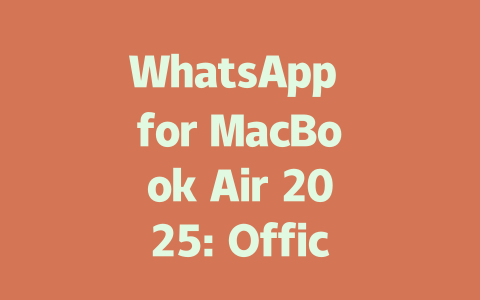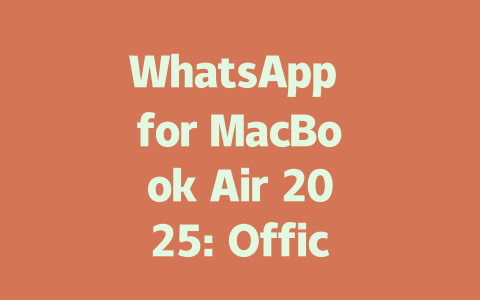You know that feeling when you’re scrolling through your phone, and it seems like everyone’s talking about some big news story, but you’ve got no idea what they’re referring to? Yeah, me too. It’s frustrating, right? Keeping up with the latest news can feel overwhelming—there’s so much out there, and not all of it is trustworthy. But don’t worry—I’ve got a few tricks up my sleeve that I use myself to stay informed without drowning in information overload.
Let’s dive into how you can keep track of the latest news in 2025 while making sure the sources are credible and useful for YOU. These methods have worked wonders for me and even helped a friend who was struggling to find reliable updates. Within just two weeks, she noticed her daily conversations were more engaging because she had solid knowledge from trusted outlets.
Step 1: Choosing Reliable News Sources
When it comes to picking where to get your news, this step matters A LOT. Think about it: if you rely on random blogs or sites filled with clickbait headlines, chances are you’ll end up wasting time reading articles that aren’t even accurate. Instead, focus on reputable platforms like BBC News, Reuters, The New York Times, or Al Jazeera. These organizations follow strict journalistic standards and prioritize factual reporting over sensationalism.
Here’s an example of why source credibility matters: last year, I stumbled upon a site claiming a major scientific breakthrough occurred, only to later discover it wasn’t true. That experience taught me always to double-check claims by cross-referencing them against well-known publishers.
To make things easier, here’s a quick checklist to evaluate whether a news outlet is worth following:
For instance, take a look at Google News. This platform aggregates content from various verified publishers worldwide. While it doesn’t write original stories itself, its filtering system ensures only legitimate pieces appear in search results.
Step 2: Customizing Your News Feed
Now that we’ve covered choosing good sources let’s talk about tailoring your news experience based on YOUR interests. No one wants to sift through tons of unrelated topics every morning. To fix this problem, try using customizable apps or websites designed specifically for personalized feeds.
One option I highly recommend is Flipboard. When setting it up initially, you select categories such as politics, entertainment, sports, technology, etc., along with specific keywords relevant to your preferences. For example, if you’re passionate about renewable energy solutions between 2023-2025, you could input terms like “solar power advancements” or “green hydrogen projects.”
| Source | Category | Reliability Score (1-10) |
|---|---|---|
| BBC News | Global | 9 |
| Reuters | Business | 8 |
| NYT | Opinion | 7 |
The table above shows examples of popular sources categorized alongside reliability ratings derived from user feedback and industry recognition. Using tools like these makes staying updated far less daunting.
Another trick I learned involves browser extensions like Pocket or Feedly. They allow saving interesting articles directly from any webpage to read later. Plus, they integrate seamlessly with mobile devices, ensuring access anytime anywhere!
Step 3: Developing Consistent Habits
Finally, consistency plays a huge role in maintaining awareness of current events. Here are some practical habits I’ve adopted over time:
Remember, being informed isn’t just about quantity—it’s also about quality. Focus on understanding key themes deeply rather than trying to consume everything superficially. If something confuses you, dig deeper until clarity emerges. Over time, you’ll notice significant improvements in both comprehension and confidence when participating in discussions involving timely topics.
Incorporating these strategies has personally transformed how I engage with the world around me. Give them a shot, tweak according to what works best for you, and soon enough, you’ll become someone others turn to for insights!
If you’re wondering whether WhatsApp can work on your MacBook Air without needing your phone around all the time, the good news is—it can! Once you’ve completed the initial setup with your phone connected to the internet, you can actually use WhatsApp on your laptop independently. The messages will automatically sync up whenever your phone reconnects later. That said, there are a few things to keep in mind: not every feature works perfectly unless both devices are online at the same time. For example, sending multimedia files or updating statuses might still need your phone to be active alongside your MacBook Air.
Now, if you’re thinking about getting started but aren’t sure about your macOS version, it’s important to check that first. WhatsApp for MacBook Air requires macOS 10.15 (Catalina) or newer versions. If you’re running an older system, some features might not work as expected—or worse, the app won’t even install. To find out which version you have, go to System Settings, click General, and then About This Mac. It’s a quick step, but skipping it could lead to frustration later on. Also, the download time varies depending on your internet speed and how fast your MacBook Air performs—anywhere from 5-12 minutes usually does the trick. After downloading, just open the .dmg file and drag the app into your Applications folder. Voilà! You’re ready to chat.
FAQ
# Frequently Asked Questions About WhatsApp for MacBook Air
# Can I use WhatsApp on my MacBook Air without a phone connection?
Yes, you can use WhatsApp on your MacBook Air even if your phone is not connected to the internet. However, the initial setup requires your phone to be online. Afterward, messages will sync once the phone reconnects to the internet. Note that some features may require both devices to be active simultaneously.
# Is there a specific macOS version required to run WhatsApp on MacBook Air?
Yes, WhatsApp for MacBook Air requires macOS 10.15 (Catalina) or later. Ensure your device is updated to this version or higher to fully utilize all the features of the desktop app. You can check your macOS version in System Settings > General > About This Mac.
# How long does it take to download and install WhatsApp on a MacBook Air?
The download and installation process typically takes 5-12 minutes, depending on your internet speed and the performance of your MacBook Air. Once downloaded, simply open the .dmg file and drag the app into your Applications folder.
# Can I receive voice calls through WhatsApp on my MacBook Air?
Yes, WhatsApp on MacBook Air supports voice calls. To initiate or answer a call, make sure your microphone and speakers are functioning properly. Additionally, ensure Bluetooth or wired headphones are connected for better audio quality during calls.
# Why does WhatsApp for MacBook Air show “Loading…” sometimes?
This issue might occur due to poor internet connectivity or syncing problems between your phone and MacBook Air. Restarting the app or ensuring both devices are connected to stable Wi-Fi can help resolve the issue. If the problem persists, try updating WhatsApp to the latest version.




